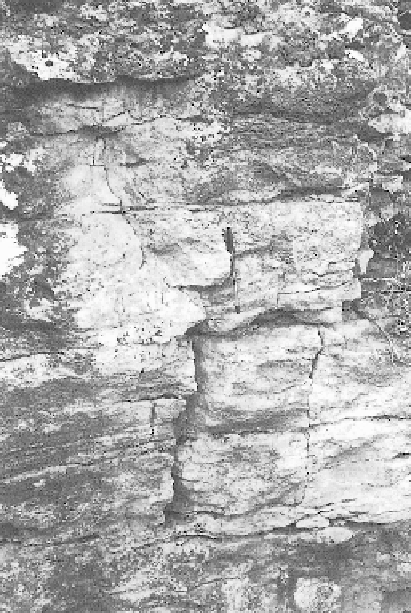Agriculture Reference
In-Depth Information
Figure 6.3
Fractured
limestone rock underlying
Grand Cru vineyards near
Gevry-Chambertin in the
Côte d'Or region, France. The
pen length is 15 cm.
(White, 2003)
Soil Structure and Water Supply
Soil structure interacts with soil water to determine the optimum conditions for
aeration, water supply, and drainage. Fundamental to understanding this interac-
tion is the relationship between the amount of water and the energy with which it
is held, the latter being measured by the soil's matric suction at a given depth (see
figure 4.13, chapter 4). Embodied in this relationship is information on the ease
of water extraction by vines, the adequacy of gas exchange between the soil and air,
the amount of plant available water (
PAW
), and the speed of drainage.
A soil at field capacity (
FC
) should have 10 to 15% air-filled porosity and
an available water capacity (
AWC
) of 20 to 25% (see figure 4.2, chapter 4), cor-
responding to 200 to 250 mm water/m depth of soil. This range of air-filled
porosity allows free diffusion of oxygen (O
2
) into the soil to maintain aerobic
respiration by roots and microorganisms and prevents too much carbon dioxide
(CO
2
) and other undesirable gases from accumulating in the soil. Furthermore,
the soil should drain rapidly after rain or irrigation, releasing water from its large
pores (macropores) that then fill with air. Such a soil does not become waterlogged
(provided there is no groundwater within 2 m of the surface).

